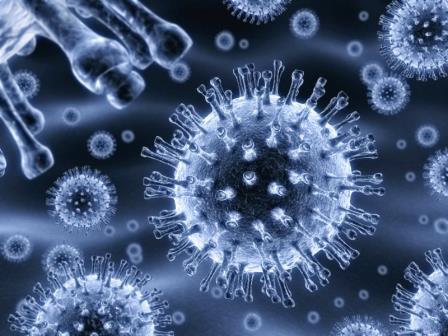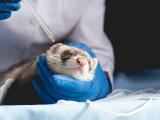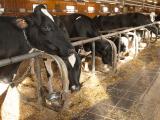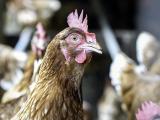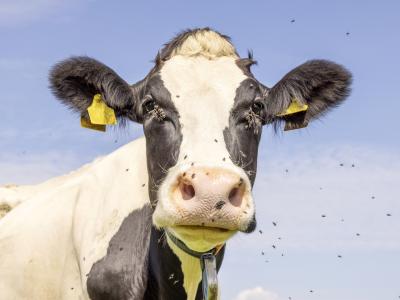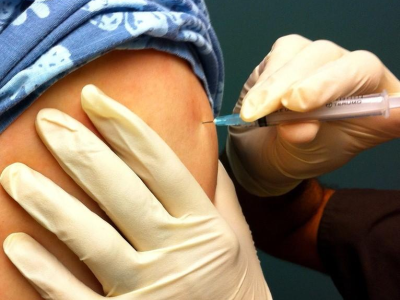Editor's note: Today's commentary was submitted to CIDRAP by the authors. They respond to critiques of their recent journal article in which they argued that there are safer and better ways to investigate influenza virus transmissibility, prevention and control than to conduct experiments that lead to the creation of more-contagious viruses.
Dr Lipsitch (mlipsitch@hsph.harvard.edu) is a professor of epidemiology and director of the Center for Communicable Disease Dynamics, Harvard School of Public Health, Boston. Dr. Galvani (alison.galvani@yale.edu) is a professor of epidemiology (microbial diseases) and of ecology and evolutionary biology and director of the Center for Infectious Disease Modeling, Yale School of Public Health, New Haven, Conn.
__________________________________________________________________
CIDRAP News recently reported on the publication of and response to our paper in PLoS Medicine titled "Ethical Alternatives to Experiments with Novel Potential Pandemic Pathogens." In it, we argue that recent experiments that create novel, highly virulent and transmissible pathogens against which there is no human immunity are unethical.
We note that they impose a risk of accidental and deliberate release that, if it led to extensive spread of the new agent, could cost many lives. While such a release is unlikely in a specific laboratory conducting research under strict biosafety procedures, even a low likelihood should be taken seriously, given the scale of destruction if such an unlikely event were to occur. Furthermore, the likelihood of risk is multiplied as the number of laboratories conducting such research increases around the globe.
Given this risk, ethical principles, such as those embodied in the Nuremberg Code, dictate that such experiments would be permissible only if they provide humanitarian benefits commensurate with the risk, and if these benefits cannot be achieved by less risky means.
We argue that the two main benefits claimed for these experiments—improved vaccine design and improved interpretation of surveillance—are unlikely to be achieved by the creation of potential pandemic pathogens (PPP), often termed "gain-of-function" (GOF) experiments. We support our arguments with published studies showing that the phenotypic effects of many mutations in influenza are contingent on interactions with other mutations in the genetic background of the pathogen—the phenomenon of epistasis.
As alternatives to PPP experiments, we cite a diversity of other promising approaches that we believe are more likely to improve our ability to control influenza. For example, experimental and sequence-based analyses of existing, human-transmissible influenza strains and their avian-transmissible ancestors are aimed at generating similar basic scientific knowledge as the GOF experiments. Other approaches, such as the development of host-targeted therapeutics, novel "universal" influenza vaccines, and improved vaccine manufacturing technology, obviate the practical value of understanding influenza transmission by providing alternative, direct means of mitigating influenza’s threat to public health.
Risk of lab-related infections
The CIDRAP News report quotes the response of Ron Fouchier, PhD, of Erasmus University in the Netherlands, and Yoshi Kawaoka, DVM, PhD, of the University of Wisconsin, the heads of two labs that published the most cited of a growing list of PPP experiments. Fouchier claimed that we miscalculated the likelihood of a laboratory-associated infection and the further probability that such an infection would lead to sustained transmission.
He asserts, "The truth is that scientific research has never triggered a virus pandemic," a statement that is hard to reconcile with the evidence, described in an article authored by Kawaoka and others, that the H1N1 strain that emerged in 1977 was likely the result of a virus that had been frozen (physically and genetically) since the 1950s, for which a laboratory accident is the most likely scenario (a view shared even by proponents of PPP research such as Vincent Racaniello, PhD). Moreover, even if there had been no laboratory escapes of influenza to date, this does not provide grounds for complacency that it will never happen, particularly when the estimates of the probability that it will occur are low but not zero.
Fouchier asserts that our estimates of accidental laboratory infections are inapplicable, because our estimates are based on instances of accidental laboratory infection that occurred for bacteria, rather than viruses, and where onward transmission did not occur. We would counter that, if anything, these differences would make our estimates more conservative: the PPPs being designed are likely to be more transmissible than the bacteria on which our estimates are based.
In addition, while the US-based infections used in that particular calculation were not viruses and did not lead to further infections, many of those conducted in other countries did, including China, where PPP experiments have been recently reported. The laboratories involved in these leaks had been certified as BSL-3 or -4, and Fouchier’s assertion that these laboratories were not maintained to necessary standards demonstrates that safety certification is not a guarantee of perfect safety.
In short, "safe" is a relative term; PPP experimentation always has a nonzero probability of failure, and we have proposed an estimate of that probability. No proponent of PPP experimentation to our knowledge has proposed an alternative estimate, other than the qualitative description "safe."
Questionable benefits
None of the responses quoted from Fouchier and Kawaoka address our critiques of the purported benefits of PPP experiments and our explanations for why PPP experiments are unlikely to improve surveillance or outbreak containment.
Regarding vaccines, Kawaoka writes, "The information obtained by ferret transmission studies can be used to evaluate which of the circulating H5N1 viruses have more pandemic potential." This claim could perhaps be true if a manufactured PPP strain turned out to have exactly the same sequence as a strain that happened to evolve from nature. Otherwise, individual mutations that happen to confer pandemicity in a given PPP strain are not reliable predictors of that phenotype in another strain, as a consequence of epistatic interactions with different genetic backgrounds.
The power of epistasis in this context was demonstrated by an MIT study that engineered mutations identified in the laboratories of Kawaoka and Fouchier into a closely related but distinct H5N1 virus and found the phenotype was not as predicted.
Another example of epistasis in influenza is highlighted by the PB2 protein mutation from glutamic acid (E) to lysine (K) at position 627. Several studies prior to the PPP experiments we reviewed showed that this mutation enhanced virulence and transmissibility of diverse influenza A viruses. And the appearance of this mutation during the 2009 H1N1 influenza pandemic raised concern.
Yet two other studies showed that this phenotype was not consistent, and in particular did not appear in the 2009 H1N1 pandemic strain. A 2010 paper from Fouchier's lab that showed this inconsistency of genotype-phenotype prediction was titled “Introduction of virulence markers in PB2 of pandemic swine-origin influenza virus does not result in enhanced virulence or transmission.”
Consequently, it is ironic that Kawaoka asserts in response to our critique, “The mutations in PB2 proteins at positions 627K and 701N are important, specific amino acid residues that promote efficient growth of avian influenza viruses in mammalian cells. . . .The authors failed to recognize that these residues were identified by gain-of-function experiments with H5N1 viruses.”
The irony is twofold: first, because the supposed universal importance of the 627 mutation was both claimed and then disproven prior to the GOF experiments in H5N1, and second, because this mutation remains a paradigm case of how little is understood of the scope of a mutation’s phenotype in the context of different genetic backgrounds. In the paper, we cite multiple other examples of this phenomenon in influenza.
Kawaoka further argues that the initial PPP experiments with H5N1 demonstrated that H5N1 influenza viruses could transmit in mammals, a proposition that some prominent virologists had questioned: “the ferret transmission studies in my lab and Ron Fouchier’s lab demonstrated that H5N1 viruses have pandemic potential and it is important to continue to stockpile H5N1 vaccines. . . . This is a critical point since vaccines expire and decisions by policy makers as to whether we continue to stockpile H5N1 vaccines should be based on scientific facts.”
Formally, while ferret transmission has been demonstrated, efficient human-to-human transmission has not. The ferret model, while possibly the best animal model for human influenza, is imperfect, and the quantitative correspondence between ferret transmission and human transmission is questionable. More important, despite skepticism regarding whether H5N1 viruses could cause a pandemic in humans, public health officials had not neglected the possibility of an H5N1 pandemic in the face of emerging human cases. The United States, for example, has stockpiled tens of millions of doses of H5N1 vaccines.
Doubts about worth of ferret studies
Lastly, both scientists assert that studies in ferrets are necessary if we are to understand mammalian transmissibility. Three significant caveats, however, are worth considering.
First, mammalian transmissibility may not exist as a general phenomenon. Ferret transmissibility is a reasonably well-defined phenotype, but the quantitative correlation with human transmissibility is imperfect, as we have noted previously. Establishing the conditions under which the model is reliable would require impractically large numbers of experiments, each involving many more ferret pairs than the two to four that have become standard in many published experiments. Thus, human transmissibility can be inferred, but not proven, in PPP experiments, barring an accident that demonstrates it inadvertently.
Second, because of epistasis, as described above, the determinants of ferret transmissibility can be identified only in relation to a specified genetic background, and may differ if the genetic background changes only slightly.
Third, as we argue in the paper, studies of the more fundamental properties of viruses, such as receptor binding and pH and temperature requirements, can be performed without creating PPP.
We believe that alternative approaches of reductionist science that explore these fundamental viral properties will ultimately lead to deeper understanding than selecting for the determinants of transmissibility in a handful of arbitrarily selected viruses, without understanding the generality of the mutations’ effect on phenotypes.
Most important, understanding transmissibility is not an end in itself, at least when risky experiments are involved. The goal that can ethically justify experiments that place human life at risk is confidence that more human lives will be saved than lost by the research. We suggest in our PLoS Medicine article many lines of research – most currently underway -- that seem more promising in achieving that end, by reducing influenza’s impact on humanity, even if the scientific means to that end do not always include unraveling the molecular basis of transmissibility. On this comparison, Fouchier and Kawaoka are silent.
Adding up the negatives
In summary: On the issue of safety, the proponents of PPP experiments start from the mistaken premise that laboratory accidents have never led to pandemic spread of influenza, when the 1977 H1N1 release probably was exactly that. They proceed to make the logically invalid argument that because laboratories have been safe to date, they will continue to be, when the question is whether an unlikely but catastrophic event may happen in the future.
While the leading virology laboratories in the world are likely to pose a very low probability of an accidental infection, the research published from these laboratories may facilitate the replication and extension of risky research in less stringently controlled settings. Moreover, given the potentially devastating consequences of an accidental infection, the burden should be on the proponents to quantify that nonzero risk and show why it can be neglected.
Proponents of PPP experimentation have not yet responded to the particulars of our critiques of the benefits of PPP experiments, especially the problem that virus phenotype is not predictable at present from sequence, because of the complex and poorly understood dependence on genetic context. As shown in the figure below, multiple obstacles stand in the way of achieving each of the two purported benefits to public health—better vaccines and better response to surveillance findings. Almost all of these barriers remain unaddressed by proponents of PPP experiments.
Logical structure of the potential lifesaving benefits of PPP experiments, required intermediate steps to achieve those benefits (blue boxes), and key obstacles to achieving those steps highlighted in our original paper (red text).
On the alternatives proposed, Fouchier and Kawaoka correctly note that these may not answer the exact same scientific question that is targeted by PPP experiments, but they fail to refute the criticisms of PPP experiments’ own ability to inform public health preparedness and response.
Asking the right question
We should move beyond the question "Should PPP experiments be banned?” which ignores the opportunity cost of performing these experiments relative to the safer, more efficient approaches that could be more vigorously pursued with the considerable resources that PPP experiments consume.
In the setting of one uniquely dangerous experimental program and others that may achieve the same goals without appreciable risk to human life, the question should be: "Is there a unique public health benefit of PPP experiments, unachievable by safer means, that outweighs their risk?"
We believe that the answer to the latter question is no, and that in light of that answer, shifting resources from expensive, low-throughput, and otherwise limited GOF experiments to these more promising alternatives is both ethically right and scientifically sound.
New study highlights risk-benefit illogic
Just last week, Kawaoka's group published a new paper that highlights the questionable reasoning underlying the public health justification of PPP experiments. The new study details the construction of a "1918-like," novel, ferret-transmissible, virulent influenza virus, with the highly speculative conclusion that since the genetic materials from which they started all exist (in different viruses) in nature, there is a continuing pandemic threat of a 1918-like virus.
The logic is elusive, but in defending the public health value of the latest work, Kawaoka says that the study "strongly supports stockpiling antiviral drugs. If this is not a 'life-saving benefit,' what is?"
Like the claims from the H5N1 papers about vaccines, this is a misrepresentation of the public health value of the work. Indeed, indications of pandemic threats do support pandemic preparedness. But as with H5N1 vaccines, antivirals are an appropriate part of pandemic preparedness for any population with the resources to stockpile them. This was true before the PPP experiments, and it remains true.
To cite the justification of an existing, already justified policy as a significant public health benefit is an exaggeration.
